Please log in to purchase this product.
Advanced Endodontics Program Version 1 ( 30 credit hours )
Please log in to view the price.
Advanced Endodontics Program Version 1 ( 30 credit hours )
Course Curriculum
Introduction (7:41 )
Endodontic Retreatment – Prof.Ahmed Abdelrahman Hashem
Start Introduction (7:41 )
Start Lec 1_Causes & predisposing factors of Post-treatment Endodontic disease (34:10 )
Start Lec 2_Treatment strategies of endodontic post-treatment disease (11:11 )
Start Lec 3_Coronal disassembly & post removal (21:29 )
Start Lec 4_Removal of root canal fillings (25:51 )
Start Handout
Endodontic Retreatment – Dr.Mostafa El Kholy
1. Intro-Outline (0:48 )
Start 2. Etiology- (6:14 )
3. Microbiology- (0:36 )
Start 4. Diagnosis (3:59 )
Start 5. Treatment Planning (3:51 )
Start 5.1 Removal of Obturating Materials (9:36 )
Start 5.2 Reshaping of the root canal (1:46 )
Start 6. Cases (6:39 )
Start 7. Summary (0:41 )
Understanding Endodontic Retreatment – Prof.Dr.Nehal Nabil
1.Introduction (0:38 )
Start 2.Failure of root canal treatment (5:20 )
Start 3.Causes of failure (18:55 )
Start 4.Causes of failure 2 (5:37 )
Start 5.Obturation (2:03 )
Start 6.Causes of post treatment failure- (2:28 )
Start 7. Presisitent infection (4:54 )
Start 8.Indications for retreatment (4:21 )
Start 9.Conventional retreatment (4:15 )
Start 10.Post removal (4:17 )
Start 11.Missed canals (9:06 )
Start 12.Gutta-precha removal (11:19 )
Start Handout
Management of Intracanal Separated Instruments – Dr.Mohamed Za`frany
Introduction (2:40 )
Start Lec 1_Why Instrument Separation Happens (11:52 )
Start Lec 2_Mangement Of intra canal Broken file (24:03 )
Start Lec 3_Techniques of separated file removal (21:26 )
Start Lec 4_Clinical Cases (8:45 )
Start Hand Out
Management of Separated Instruments Dr.Hend Hamdy
1-Introduction & Course outline (1:22 )
2-Factors affecting breakage of the instrument ( 2-1 Overview ) (2:05 )
Start 2-2-Access cavity- (2:26 )
2-3-Root canal anatomy (3:39 )
2-4-Instrument related factor (4:54 )
Start 2-5-Motor operating parameters (6:50 )
Start 2-6-Sterilization and disinfection- (6:58 )
Start 3-Management of Broken files (5:29 )
Start 4-Factors affecting Retrieval (1:44 )
Start 4-1-Factors affecting Retrieval (Tooth related factors) (1:37 )
Start 4-2-Factors affecting Retrieval (Instrument related factors) (4:57 )
4-3-Factors affecting Retrieval (Type and length of broken instrument & other factors) (2:43 )
Start 5. Clinical management of broken files (9:32 )
Start 6. Non surgical management bypass vs retrieval (12:02 )
Start 7-1-File Retrieval (Steps of File Retrieval) (7:33 )
Start 7-2-File Retrieval (Instrument removal systems) (13:00 )
Start 7-3-File Retrieval (Complications of file retrieval and their prevention) (6:31 )
Start 7-4-File Retrieval (Demo on retrieval fractured file) (7:16 )
Start 8.1-Ledge Management (Introduction) (0:44 )
Start 8.2-Ledge Management (Causes affecting ledge formation) (9:24 )
Start 8.3-Ledge Management (Management of ledge) (5:15 )
Start 8.4-Ledge Management (Challenges of obturation past ledge) (1:36 )
Start 8.5 -Ledge Management (Advice to avoid ledge formation) (6:22 )
Start Handout
Management of Calcification & Extra Canals-Dr.Ahmed Ezz
1.Introduction (1:16 )
Start 2.overview on classification of the root canals- (2:09 )
Start 3.1 Challenges in upper anteriors (Challenges in Upper Central Incisors) (16:51 )
Start 3-2 Challenges in upper anteriors (Extra Canals in Upper Central) (6:22 )
Start 3.3 Challenges in upper anteriors (Challenges in Upper Lateral) (5:42 )
Start 3.4 Challenges in upper anteriors (Challenges of Upper Canine) (11:02 )
Start 4. pulp morphology of lower anteriors (7:54 )
Start 5.1 Challenges of Upper Premolars (Upper 4) (6:59 )
Start 5.2 Challenges of Upper Premolars (Upper 5) (12:24 )
Start 6.1- Challenges of Lower Premolars (How to Know) (4:04 )
Start 6-2-Challenges of Lower Premolars (How to Prepare) (4:57 )
Start 6.3 -Challenges of Lower Premolars (How to Obturate) (6:12 )
Start 7. pulp morphology of upper 6 (21:42 )
Start 8. some cases that failed due to missed MB2 (8:47 )
Start 9. pulp morphology of upper 7 (5:02 )
Start 10. pulp morphology of lower 6 (13:40 )
Start 11. pulp morphology of lower 7 (8:08 )
Start 12. Tips during preparation (4:49 )
Start Handout
Minimal Invasive Endodontics (Advanced Access Cavity Designs ) – Dr. Hytham Abd Elaziz
Start Introduction (1:21 )
Start Lec 1_Rules & Misconceptions Of Traditional Access Cavity Design (13:37 )
Start Lec 2_Custom Access Cavity Design In Clinical Cases (6:07 )
Start Lec 3_Traditional Vs Conservative Contracted Access Cavity Design (11:36 )
Start Lec 4_Contracted Endodontic Cavity Designs (14:36 )
Start Lec 5_Factors Affecting Our Choice Of Access Cavity Design In Each Situation (10:35 )
Start Lec 6_Clinical Cases (10:51 )
Start Lec 7_Anatomy, The Whole Story (19:08 )
Start Handout
Regenerative Endodontics – Dr.Ahmed Shawky
Start Intro (Curriculum , Objectives & Alternatives) (1:02 )
Start 1_Challenge In Dealing With Immature Teeth & Case Selection (4:59 )
Start 2_How To Prepare Fully Revascularization By Canal Disinfection Protocol (13:09 )
Start 3_Application Of Scaffold (9:53 )
Start 4_How To Monitor Clinical & Radiographic Outcomes (8:02 )
Start Handout
Endo Surgery – Prof. Mohamed Mahmoud
Start Lec 0_Introduction (5:08 )
Start Lec 1_Micro Surgery Armamentarium,Indications & Contraindications (7:37 )
Start Lec 2_Surgical Technique 1- (Hemostasis) (7:06 )
Start Lec 3_Surgical Technique 2- (Flap Types,Design & Incision) (11:34 )
Start Lec 4_Surgical Technique 3-(Hard Tissue Management) (9:26 )
Start Lec 5_Root End Preparation (6:55 )
Start Lec 6_Retrograde Filling Materials (6:51 )
Start Lec 7_Flap Closure , Wound Healing , Mental Nerve Management (8:41 )
Start Lec 8_Clinical Cases (15:07 )
Start Handout
Ledge Correction – Prof.Dr.Nehal Nabil
Start 1. introduction (0:31 )
Start 2.Etiology of the Ledge (11:42 )
Start 3.Management of Ledge (6:55 )
Start 4-How to avoid ledge formation (8:09 )
Start 5.Ledge bypass (9:37 )
Start 6. prognosis for ledge cases (3:17 )
Start Handout
Management of Ledge Formation Dr.Hytham Abd Elaziz
Introduction (1:58 )
Start 2-Causes and Presentation Of Canal Patency Loss (8:38 )
Start 3-Root Canal Ledge Formation (12:31 )
Start 3.1 Improper Scouting (13:53 )
Start 3.2. Calcified Canals and canal enviorment (3:14 )
Start 4- Consequences of Ledging (2:46 )
Start 4.1 Consequences of Ledging (Case) (4:48 )
Start 4.2 Consequences of Ledging (Ledge Bypass Protocol) (9:52 )
Start 5.1 Case 1 (4:51 )
Start 5.2. Case 2 (2:24 )
Start 5.3. Case 3- (4:52 )
Start 5.4. Case 4- (3:37 )
Start 5.5 Case 5- (1:48 )
Start 6. Conclusion Message- (2:04 )
Start 7. Summary (0:49 )
Start Handout
Bioceramics, Perforation Management and MTA Application Dr.Mohamed Hamed
1-Introduction (0:40 )
Start 2-Overview on failure (6:08 )
Start 3-MTA – Mineral Trioxide Aggregate (5:40 )
Start 4-What is Bioceramics, with classification (8:29 )
Start 5-Biodentine Composition (2:21 )
Start 6-Uses of Bioceramics (13:41 )
Start 7-MTA as root canal filling material (10:15 )
Start 8-MTA in vital and non-vital pulp therapy (6:26 )
Start 9-MTA as a Retro grade cavity filling (9:19 )
Start 10-Perforation problem and positions (6:49 )
Start 11-Treatment options and factors affecting in perforation cases (5:08 )
Start 12-Treatment sequence in perforation cases (12:37 )
Start Handout
Management of Open Apex Dr. Ahmed Ezz
Introduction (0:44 )
Start 1. Basics Causes (2:34 )
2. Diagnosis (Diagnosis of Anterior) (3:26 )
Start 2.1 Diagnosis ( If VITAL) (15:35 )
Start 2.2 Diagnosis (If necrotic) (1:05 )
Start 3. Apexification (12:32 )
Start 3-1 Apexification (Application of MTA) (10:48 )
Start 3.2 Apexification (Can we face open apex in mature patients) (9:45 )
Start 3.3 Apexification (What If I made Mistakes During MTA application) (8:18 )
Start 4. Revascularization (5:21 )
Start 4.1-Revascularization (Procedure of Vascularization) (16:23 )
Start 4.2 -Revascularization (Clinical Cases of Vascularization) (11:14 )
Start Handout
Endodontic Perforation Repair & MTA Application – Prof.Dr.Ahmed Farghaly
Start 1. introduction- (1:44 )
Start 2. perforation (Definition and Etiology) (3:22 )
Start 3. How to repair perforation- (4:52 )
Start 4. How to make a Decision (7:34 )
Start 5. clinical cases- (5:36 )
Start 6. surgical Vs Non surgical (2:29 )
Start Handout
Cone Beam CT in Endodontics Prof.Dr.Ahmed Ghobashy
Start 0.Course Introduction (1:07 )
Start 1. The 2D imaging V.S Virtual reality (9:34 )
Start 2.The Virtual reality in endodontics – CBCT (6:20 )
Start 3.CBCT advantages (4:39 )
Start 4. First modality of CBCT in endodontics – 3D Imaging (4:59 )
Start 4-1 Uses of 3D Imaging 1 (5:20 )
Start 4-2 Uses of 3D Imaging 2 (7:33 )
Start 5-2nd modality of CBCT in endodontics – 3D Reconstruction (10:35 )
Start 6-3rd modality of CBCT in endodontics – 3D Printing (5:50 )
Start 7-Take home message for all 3D modalities (7:30 )
Start Handout
Minimally Invasive Endodontics – Prof.Dr. Mohsen Nour El Deen
1. Intro- (0:26 )
Start 2. Def and Traditional Endo Cavities (3:06 )
3. Key Objectives of Endodontic Access Cavity (3:28 )
Start 4. Aids, Armamentarium amd Guidelines for conservative access cavity preparation (6:10 )
Start 5. Access preparation in anterior teeth (4:25 )
Start 6.1 Access preparation in posterior teeth (4:46 )
Start 6.2 Posterior teeth (Orifice Directed Access) (1:20 )
Start 6.3 Posterior teeth (Stepped Access Cavity) (1:44 )
Start 6.4 Posterior teeth (Caries Directed Access) (2:00 )
Start 6.5 Posterior teeth (Truss Access Cavity) (2:32 )
Start 7. Shaping the root canal space (4:13 )
Start 8. Advantages and Disadvantages of conservative access cavity- (4:00 )
Start 9. Conclusion (1:00 )
Start 10. Case Presentation (2:18 )
Start 11. Summary (2:27 )
Start Handout
The Pink Tooth – Dr. Mohamed Hamed
Start 1-The Pink Tooth (5:47 )
Start 2-How it Happens- (5:03 )
Start 3- How to Diagnose- (6:43 )
Start 4-How to Manage- (11:24 )
Start Handout
Endodontic Failure (The Clinical Perspective)-Dr. Mohammad Saeid
Start 1. Intro – Outline (1:41 )
2. Causes of faliure of Endodontically treated teeth- (1:40 )
Start 3.1.1 Biological Failure – How to avoid missing canals part 1- (8:39 )
Start 3.1.2 How to avoid missing canals part 2 (11:44 )
Start 3.1.3 How to avoid missing canals part 3 (8:20 )
Start 3.2 Incomplete shaping and cleaning (5:35 )
Start 3.3 Coronal leakage (4:13 )
Start 4.1 Mechanical Failure – 1. Unnecessary large Access Cavity (5:33 )
Start 4.2 Truss access cavity – Caries driven access cavity (7:11 )
Start 4.3 Large files taper – Over drilling during post Placement – Delayed Cuspal coverage – Coronal leakage (3:17 )
Start 5. Summary (1:34 )
Start Handout
Only logged in customers who have purchased this product may leave a review.
Related Products
Dentistry Video
Dentistry Video
Dentistry Video
Dentistry Video
Dentistry Video
Prof. Mauro Fradeani Prosthetic rehabilitation for MIPP course
Dentistry Video
Dentistry Video
Dentistry Video
Dentistry Video
Crestal approach for Sinus Elevation – 20 years of Researches
Dentistry Video
Dentistry Video
Dentistry Video
Dentistry Video
Surgical and Non-Surgical Laser Applications in Periodontology
Dentistry Video
Dentistry Video
Dentistry Video
Dentistry Video
Seeking the Optimal Aesthetic Result in the Maxillary Anterior
Dentistry Video
Dentistry Video
Dentistry Video
Dentistry Video
Dentistry Video
Dentistry Video
Advances for Esthetic Dental Implants: Minimally invasive techniques with Biologics (rhPDGF-BB)
Dentistry Video
Dentistry Video
Dentistry Video
Dentistry Video
Dentistry Video
Dentistry Video
Dentistry Video
Dentistry Video
Dentistry Video
Dentistry Video
Dentistry Video
Dentistry Video
Dentistry Video
Dentistry Video
Dentistry Video
Dentistry Video
Dentistry Video
Dentistry Video
Dentistry Video
Dentistry Video
Dentistry Video
Dentistry Video
Dentistry Video
Dentistry Video
Dentistry Video
Dentistry Video
Dentistry Video
California Society of Pediatric Dentistry Annual Meeting 2024
Dentistry Video
Dentistry Video
Dentistry Video
Dentistry Video
Dentistry Video
Dentistry Video
Dentistry Video
Dentistry Video
Dentistry Video
Dentistry Video
Dentistry Video
Dentistry Video
Dentistry Video
Dentistry Video
Dentistry Video
Dentistry Video
SurgicalMaster™ Monthly Coaching Show – Episode 31 – August 2023
Dental Video
Dentistry Video
Dentistry Video
Dentistry Video
Dentistry Video
Dentistry Video
Dentistry Video
Dentistry Video
Dentistry Video
Dentistry Video
Dentistry Video
Dentistry Video
Dentistry Video
Dentistry Video










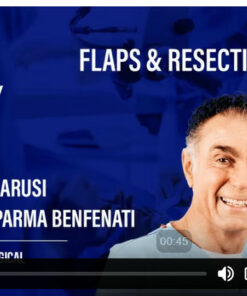

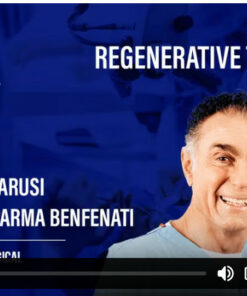


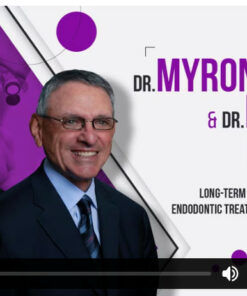

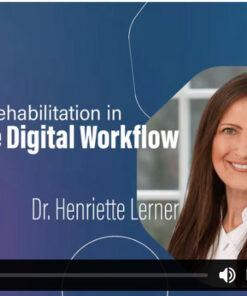


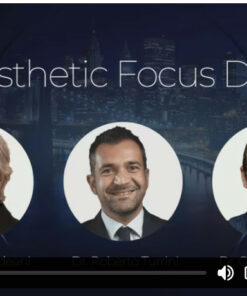



























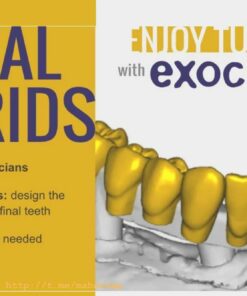









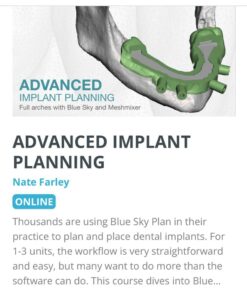

























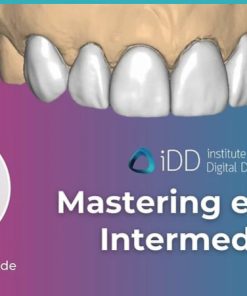





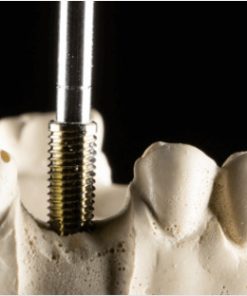




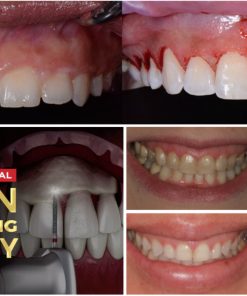
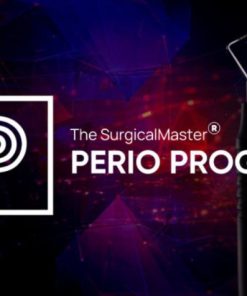







Reviews
There are no reviews yet.